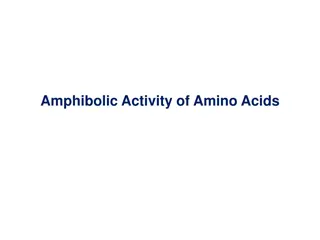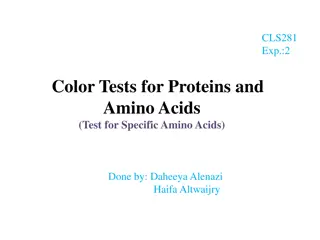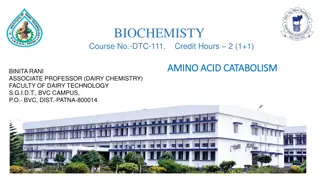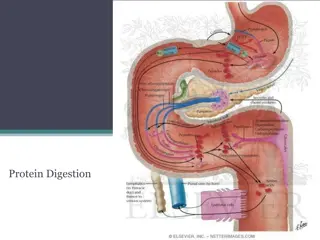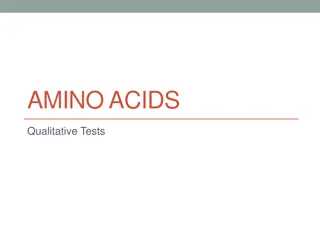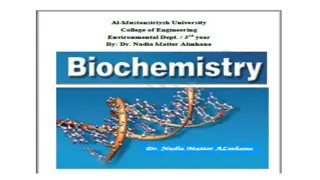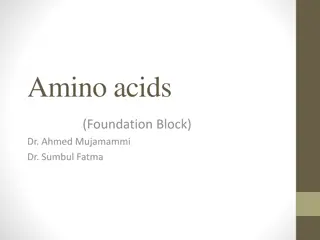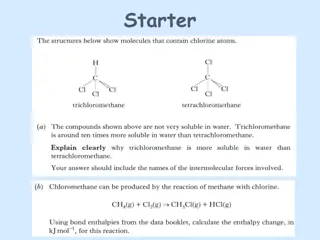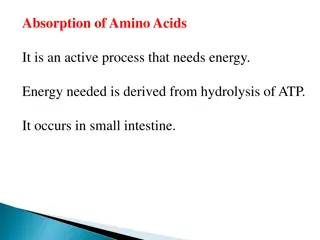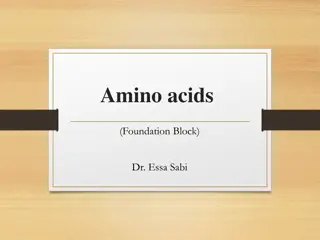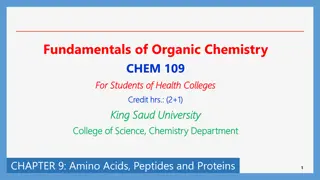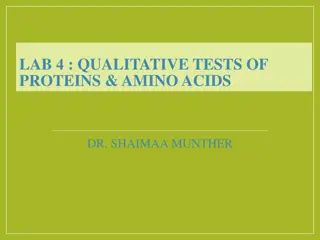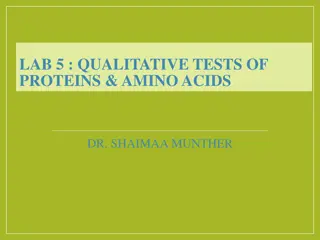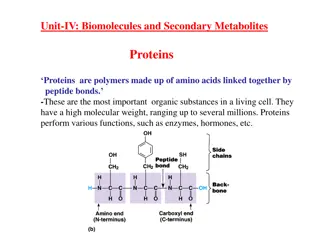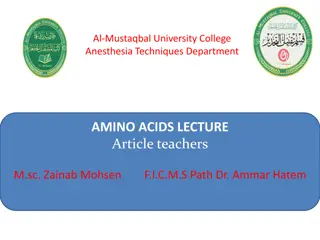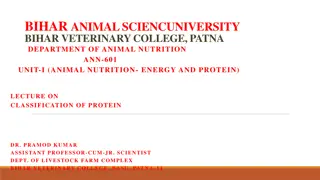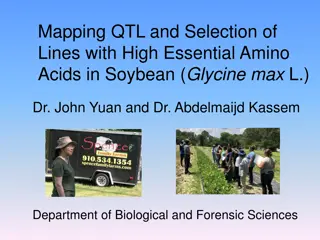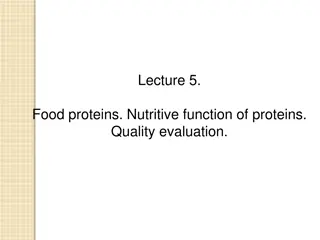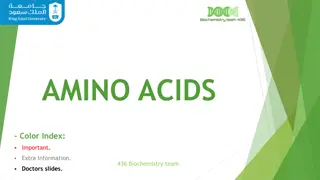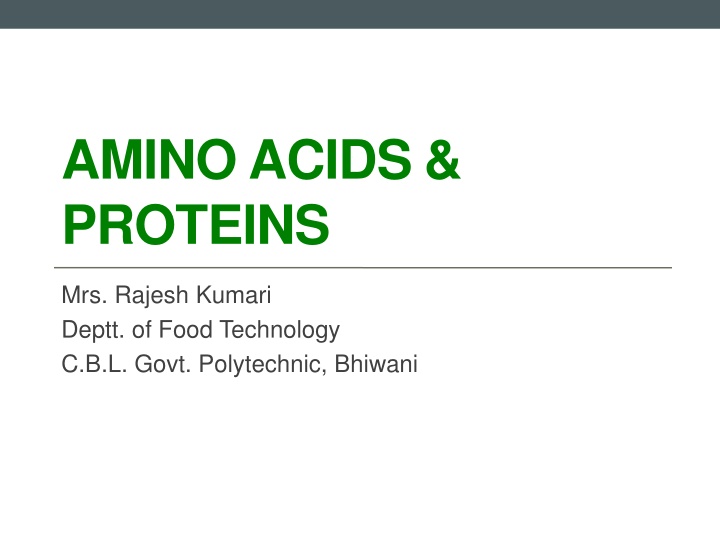
Amino Acids and Proteins in Food Technology
Explore the world of amino acids and proteins in food technology with insights on different types of amino acids, their functions, peptide bonds, protein structure, and protein functions. Learn about essential amino acids, protein synthesis, and the significance of protein structure in determining functionality. Dive into details on fibrous proteins' role in structure and contractile proteins in movement. Unravel the chemistry and biology behind these essential components for nutrition and human health.
Download Presentation

Please find below an Image/Link to download the presentation.
The content on the website is provided AS IS for your information and personal use only. It may not be sold, licensed, or shared on other websites without obtaining consent from the author. If you encounter any issues during the download, it is possible that the publisher has removed the file from their server.
You are allowed to download the files provided on this website for personal or commercial use, subject to the condition that they are used lawfully. All files are the property of their respective owners.
The content on the website is provided AS IS for your information and personal use only. It may not be sold, licensed, or shared on other websites without obtaining consent from the author.
E N D
Presentation Transcript
AMINO ACIDS& PROTEINS Mrs. Rajesh Kumari Deptt. of Food Technology C.B.L. Govt. Polytechnic, Bhiwani
Amino acids Amino group, carboxyl group, hydrogen and a variable side group (residue) each joined to a central carbon atom R H2N-C-COOH H
Types of amino acids Amino end and carboxyl end can be ionised NH3+ and COO- to give acidic and basic characteristics At pH 7 both groups are ionised The residues are side chains which give the individual properties to the amino acid (acidic, basic, neutral and nonpolar).
Functions of amino acids Protein synthesis, energy reserves, hormones (thyroxin) 20 different amino acids used in protein synthesis though others do occur in nature Essential amino acids cannot be synthesised by the organism and must form part of their diet.
The peptide bond Carboxyl group + amino group form a strong covalent bond releasing water in the process = a condensation reaction (the reverse is hydrolysis) Amino acids join together in a long chain: N terminal end to C terminal end = a polypeptide.
R O R O H H N C C-OH N C C-OH H H H H Condensation reaction A dipeptide is formed R R O O H H + H2O C-OH N C H N C C H H The peptide bond
Protein structure Primary structure The primary structure of human cytochrome C Each letter represents an amino acid This protein has 105 amino acids.
PROTEIN FUNCTIONS Protein structure determines protein function Denaturation or inhibition which may change protein structure will change its function Coenzymes and cofactors in general may enhance the protein's structure.
Fibrous proteins Involved in structure: tendons ligaments blood clots (e.g. collagen and spiders silk) Contractile proteins in movement: muscle, microtubules (cytoskelton, mitotic spindle, cilia, flagella).
Globular proteins most proteins which move around (e.g. albumen, casein in milk) Proteins with binding sites: enzymes, hemoglobin, immunoglobulins, membrane receptor sites.
Proteins classified by function CATALYTIC: enzymes eg rubisco COMMUNICATION: hormones (eg insulin) and neurotransmitters PROTECTIVE: eg immunoglobulin, fibrinogen, blood clotting factors STRUCTURAL: eg collagen PIGMENTS: eg rhodopsin STORAGE: eg ovalbumen (in eggs), casein (in milk) TRANSPORT: eg hemoglobin CONTRACTILE: eg actin, myosin TOXINS: eg snake venom

